Straddling the Central American isthmus, Panama blends tropical climate, coast-to-coast shorelines, lowland rainforests, cloud forests and mangroves—conditions that foster exceptional biodiversity. Unfortunately, habitat fragmentation, pollution, illegal hunting and wildlife trade are pushing many species toward extinction. This guide profiles 22 at-risk animals you can find in Panama, with quick ID notes, ecology, and the main threats they face.
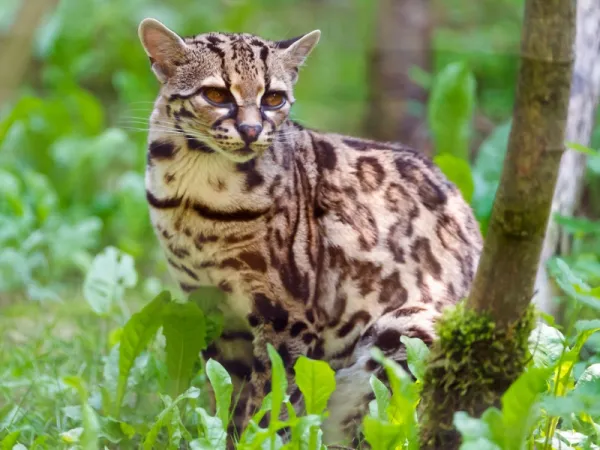
Range & habitat: Endemic to Panama; depends on fast-flowing streams within humid montane forests.
ID notes: Brilliant golden body; 4.5–6.3 cm in length (females larger).
Behavior: Besides soft calls, uses arm-waving signals to communicate over stream noise.
Wild status: Considered possibly extinct in the wild since 2007; safeguarded via ex-situ breeding and reintroduction programs.
Threats: Habitat loss and pollution, chytridiomycosis (fungal disease), illegal collection.
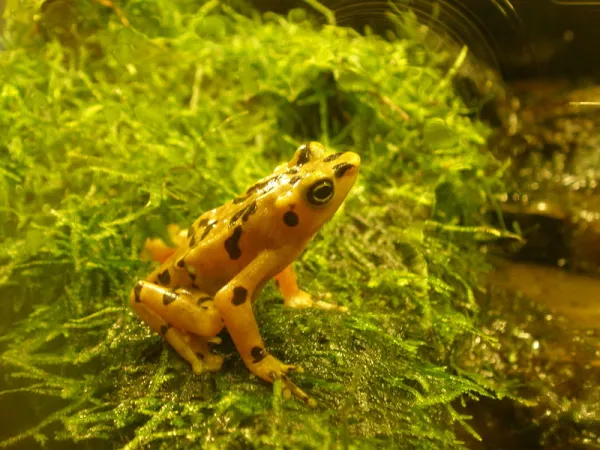
Range & habitat: Highlands from southern Mexico through Guatemala to western Panama; cloud forests.
ID notes: Males show iridescent emerald-green body, crimson breast, and elongated spectacular tail plumes; females duller with shorter tails. ~40 cm body length (tail streamers much longer in males).
Diet & role: Frugivore (key seed disperser), also takes insects.
Status: Near Threatened with declining trends.
Threats: Cloud-forest clearance/fragmentation, trapping.
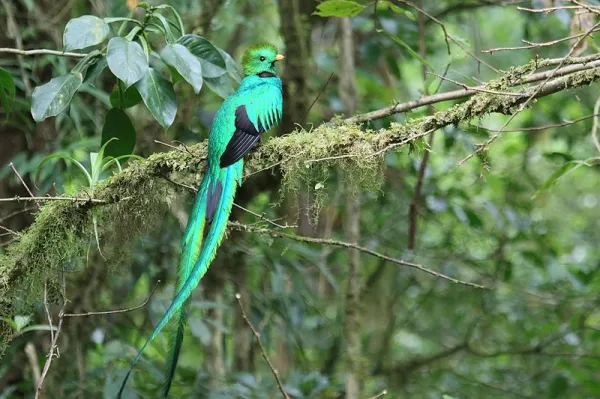
Range & habitat: Panama to Colombia’s Chocó; various forest types including secondary and riparian forest.
ID notes: Large forward-facing eyes (nocturnal), ~0.9 kg; rufous-to-brown back, yellowish belly, dark hands.
Behavior: Nocturnal, arboreal, territorial, typically monogamous family groups (2–6).
Threats: Ongoing deforestation and degradation; true wild numbers unclear but trending down.
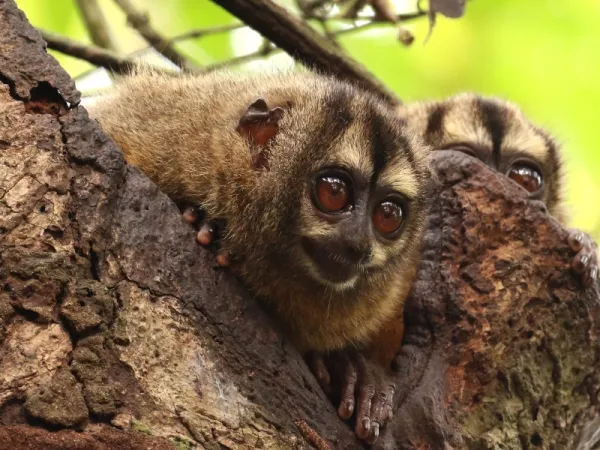
Range & habitat: Moist and dry forests of Panama, Costa Rica and Nicaragua.
ID notes: 24–65 kg; tawny to reddish coat, long limbs, small head.
Ecology: Solitary, mostly crepuscular/nocturnal, capable of long-distance movements. Hunts medium-to-large mammals (e.g., white-tailed deer) and may take livestock, leading to conflict.
Conservation focus: Regionally Vulnerable/at risk; priority on ecological corridors and human–wildlife conflict mitigation.
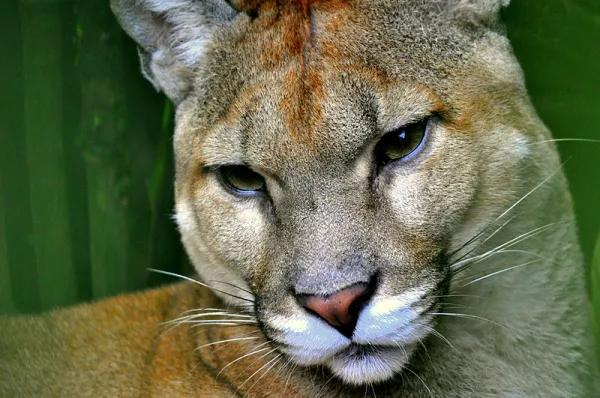
National symbol: Panama’s national bird.
Size: Among the world’s largest eagles—up to ~1 m long, ~2 m wingspan; females heavier (to ~10 kg).
Diet: Apex raptor taking sloths, monkeys, armadillos and large birds.
Status: Near Threatened, declining where lowland rainforest is lost.
Threats: Deforestation/forest fragmentation; occasional persecution. Protecting nest sites and key territories is crucial.

Habitat: Dry forest, secondary woodland, savanna and gallery forest.
Ecology: Herbivorous ruminant feeding on leaves, fruits, seeds and fungi; active day and night; solitary or small groups.
ID notes: Flashes an upright white tail when running; seasonal coat—darker brown in winter, more reddish in summer.
Status: Generally stable but requires regulated hunting and habitat management to avoid local declines.
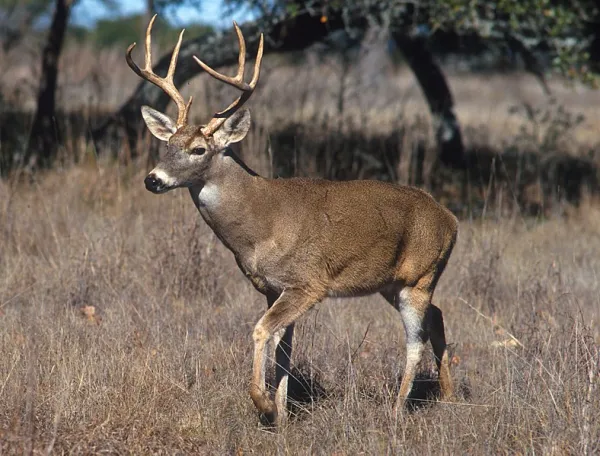
Geoffroy’s spider monkey (Ateles geoffroyi) — Endangered; canopy specialist highly sensitive to forest fragmentation and hunting.
Baird’s tapir (Tapirus bairdii) — Endangered; Central America’s largest terrestrial mammal; threatened by habitat loss and poaching.
Oncilla (Leopardus tigrinus) — Small spotted cat; pressured by habitat loss and historical fur trade.
Anteaters (order Vermilingua) — Road mortality and habitat change affect multiple species.
White-lipped peccary (Tayassu pecari) — Vulnerable; declines with hunting and forest loss.
West Indian manatee (Trichechus manatus) — Vulnerable; impacted by boat strikes, bycatch, and coastal habitat degradation.
Neotropical otter (Lontra longicaudis) — Near Threatened; sensitive to water pollution and riverbank alteration.
Ocelot (Leopardus pardalis) — Nocturnal mid-sized cat; threatened by habitat loss and trafficking.
Central American squirrel monkey (Saimiri oerstedii) — Western Panama/Costa Rica; vulnerable to habitat pressures.
Sea turtles (nesting/foraging in Panamanian waters):
Hawksbill (Eretmochelys imbricata) — Critically Endangered; shell trade, coastal degradation, bycatch.
Green turtle (Chelonia mydas) — Endangered; coastal development, bycatch, light pollution at nesting beaches.
Olive ridley (Lepidochelys olivacea) — Vulnerable; arribada nesting sites disturbed.
Leatherback (Dermochelys coriacea) — Vulnerable; plastic ingestion, fishing gear entanglement.
Loggerhead (Caretta caretta) — Vulnerable; bycatch and beach alteration.
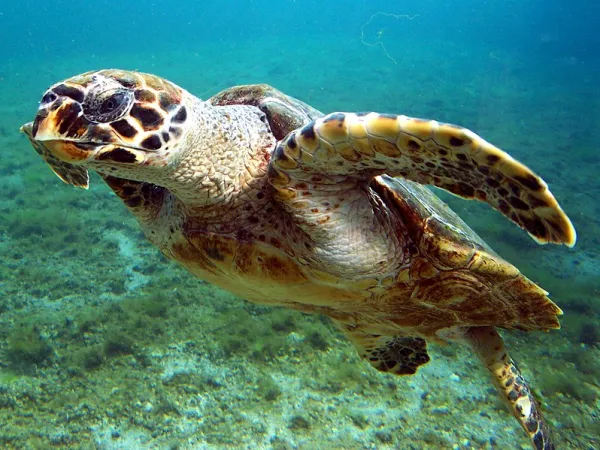
Additional notes:
Mallard (Anas platyrhynchos) — Mainly a migrant/occasional visitor; not globally threatened but relies on quality wetlands.
Bush dog (Speothos venaticus) — Near Threatened; requires connected forests and is sensitive to human disturbance.
Global Red List categories are indicative; regional risk in Panama may be higher depending on local trends and habitat condition.
Cut pollution: Reduce single-use plastics, choose public transit, dispose of batteries/chemicals responsibly.
Respect protected areas: Follow rules in national parks and reserves; do not feed or disturb wildlife.
Say no to the exotic-pet trade: Never buy wild-caught “exotics”; legal animals must have valid CITES paperwork.
Report wildlife crime: Inform authorities if you encounter poaching or illegal trade.
Reject wildlife products: Don’t buy tortoiseshell, feathers, furs or any curios with unclear origin.
Prevent invasive species: Don’t release non-native pets or plants; choose safe garden/aquarium species.
Get involved: Volunteer or donate to local conservation groups, sea-turtle patrols and community stewardship projects.
Share knowledge: Spread accurate species and conservation information—public awareness multiplies impact.
Safeguarding forest connectivity, nesting beaches, estuaries and mangroves is central to Panama’s conservation future. Every informed choice and action helps give these species the time—and the habitat—they need to recover.
animal tags: endangered animals of panama
We created this article in conjunction with AI technology, then made sure it was fact-checked and edited by a Animals Top editor.